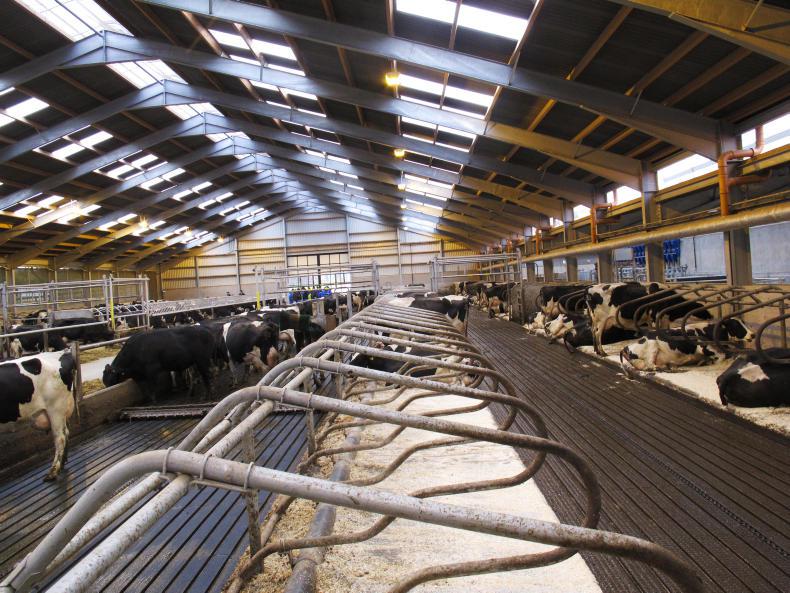It could be a challenging year for dairy markets, but just where milk price will go later in 2018 is currently uncertain.
While commodity prices have been in decline in recent months on both the GDT and Dutch auctions, prices are currently on a par with those in January 2017. Milk prices paid to farmers back then in NI were around the 26p/litre mark.
Processors are currently pointing to a correction in current base prices of 3p to 4p/litre in the first quarter of 2018, but there are still several reasons to believe the industry is not facing a repeat of the price collapse of 2015/16.
GDT
The first GDT auction of 2018 has started on a positive note, with a 2.2% increase in the index price. Most notable in this week’s auction was the rise in demand for whole milk powder (WMP), with prices rising by 4% to $2,890/t.
Skim milk powder (SMP) also recorded an increase in price, by 2% to $1,700/t.
Butter saw no movement, while cheddar fell by 2%.
The quantity of product for sale was significantly down compared with previous auctions.
At the last auction in December, 29,592t was offered, compared with 25,400t this time around.
That is in response to lower milk supply and dry weather in New Zealand, which has forced processing giant Fonterra to take powder off the GDT platform and cut its forecast for milk collections for the 2017/18 season by 4%, to 1,480m kg of milk solids.
With peak production now past, Fonterra are also predicting lower volumes of milk for processing during the next six months.
Exchange rate
Within the UK, the weakening of sterling has helped to insulate milk prices and encouraged growth in export markets. When prices were in decline in 2015, sterling was extremely strong against both the Euro and US dollar, further suppressing milk price.
However, the value of sterling against the Euro is currently 25% higher when compared with 2015/16 levels.
Growing exports
Dairy exports to China are on the rise again and the EU is a key supplier to this market. Exports of WMP and SMP produced in the EU are up by 3% and 14% respectively. EU butter exports to China are up by 12%.
In addition, the main oil-producing regions in the Gulf are also in a much stronger economic position compared with 2015, as are several regions in Africa.
Japan and South Korea are also emerging as important export destinations for EU dairy commodities.
Short-term buying
While EU milk production is up in 2017, the rate of growth in demand for dairy commodities is running at a similar level. The main problem at present is that production is expected to continue rising throughout 2018 and as a consequence, key buyers of milk products are purchasing on short-term contracts.
With prices falling, short-term buying further reduces buyer confidence, as many will be hedging on prices going down further before locking into contracts.
It all means that it is sentiment that is taking the market down at present and, ultimately, it is production in 2018 that will dictate where the market actually ends up.
EC outlines possible options for SMP in store
The European Commission has outlined two possible scenarios to deal with close to 376,000t of skim milk powder (SMP) it currently holds in storage.
The long-term aim of both options is to grow demand for SMP and raise prices to €2,500/t by 2020.
The first option would see SMP gradually released on to the market over a three-year period.
At the same time, no further SMP will be purchased for intervention.
At current export levels, approximately 140,000t of SMP would be released from intervention stores annually.
During this time, the Commission expect SMP prices to remain relatively low, with cheese production more profitable than butter and skim.
Option two would see no SMP released from intervention during 2018 and no purchasing of the product either.
With no prospect of additional product coming on to the market in 2018, the Commission believes this option would help to relieve pressure on milk powders.
November milk solids comparison
To help highlight what a change to pricing on milk solids might mean for dairy farmers in NI, shown in Table 6, is a comparison of what farmers could expect to receive in November based on the current system versus one based on milk solids (A+B-C). The exercise is theoretical, as it would be up to individual buyers to price protein, fat and put a cost on processing, as they see fit.
The assumptions used in our model are those presented by Dr Laurence Shalloo at the Irish Farmers Journal/Ulster Farmers Union milk conference in October 2017 and updated to reflect recent changes in milk price.
The figures Table 6 are based on the milk qualities for good, average and below average milk in this month’s milk league (Table 1), and assume a producer supplies one million litres annually (63,000 litres in November) at a base price of 30p/litre. With milk solids normally higher at this time of the year, this will favour the A+B-C system.






 This is a subscriber-only article
This is a subscriber-only article





SHARING OPTIONS: